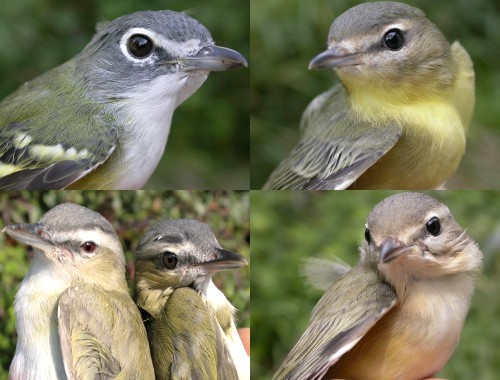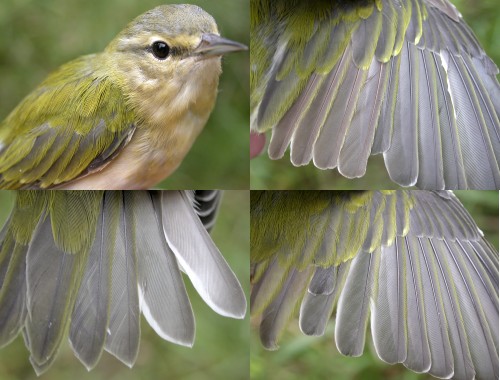|
McGILL BIRD OBSERVATORY |
|||||||||||||||||||||||||||||||||||||||||||||
Welcome to the McGill Bird Observatory weekly report. Click here for a complete listing of our archives. Comments or questions are welcome at mbo@migrationresearch.org.
Bander-in-charge:
Marcel Gahbauer Notes: This was our first week of full operation for the fall season, so it is not surprising that with six days of good weather we set a new weekly record with 283 birds banded. Wednesday was washed out with the leftover rain from Hurricane Katrina, which somewhat replenished the low water level in the ponds, but seemed to have little effect on the mix of birds present. Tuesday and Sunday the migration was quite slow, allowing us to get some much needed site maintenance done, but otherwise the level of activity was medium to high every day. Even more than the past few, this was the week of the warblers. 19 species were banded this week, including a high of 15 on Friday. They accounted for 61% of all the birds banded this week, and up to almost 80% on a couple of days. Without exception, the most numerous species every day this week was the Magnolia Warbler, with a total of 53 banded. Though in distant second place with 27, the Red-eyed Vireo also deserves honourable mention for being unusually abundant this week. This week we banded our first ever Philadelphia Vireo, and also added another three species to the list of birds banded this fall with Cedar Waxwing, Western Palm Warbler, and an early Slate-coloured Junco on August 29. In addition to these, several other species were seen for the first time this season. The Connecticut Warbler on Sunday's census was only the second ever observed at MBO. The day before, a Great Horned Owl hooted at sunrise, and the first few Canada Geese flew past overhead. Belted Kingfisher, Scarlet Tanager, and American Kestrel rounded out the week's new additions. Overall it was the most diverse week yet this fall, with 79 species observed. As the later migrants begin to trickle in, we're already saying goodbye to some of the early ones. It seems that the last of the Eastern Kingbirds have already left, and the numbers of Yellow Warblers, Baltimore Orioles, Indigo Buntings, and Rose-breasted Grosbeaks have tapered off to the point that we expect them to soon disappear altogether as well. We are still seeing at least a couple of Ruby-throated Hummingbirds in the nets daily, but they too are likely to move on before long. In the meantime though we continue to enjoy their irrepressible spirit, highlighted by one on Saturday which pursued a crow over quite a long distance!
|


